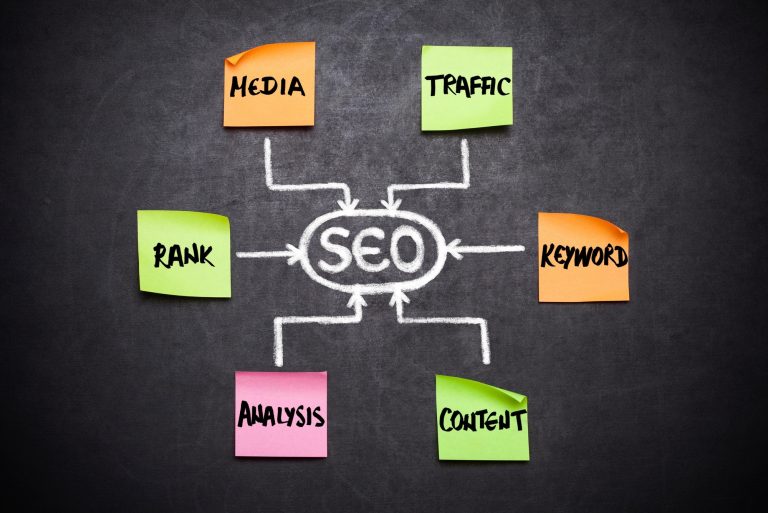Search engine optimization in digital marketing drives 53% of all website traffic, while paid search accounts for only 15%.
These numbers show why companies focus on organic search strategies. Google’s top organic search result gets 27.6% of clicks, which makes high rankings vital for online visibility. On top of that, it slashes customer acquisition costs by 87%, offering economical solutions that fuel sustainable growth. The proof is clear – 91% of marketers say SEO improves their website performance and marketing goals.
New marketers learning what is SEO in digital marketing need to understand the process completely. Search engine optimization takes 4-6 months to deliver its most important results when done right. This piece explains every step of SEO – from researching keywords and analyzing competitors to creating content and measuring results. The digital world keeps expanding, with search advertising expected to hit $306.7 billion in 2024. Becoming skilled at these basics matters more than ever to succeed in digital marketing.
What is SEO in Digital Marketing?
SEO is the lifeblood of effective digital marketing.
The main goal of SEO helps search engines understand your content and connect it with users. It delivers relevant, valuable results based on their search queries.
Success in SEO starts with understanding how search engines work. Google and other major search engines use complex algorithms and programs called crawlers.
SEO covers several key components that boost your site’s ranking:
- On-page SEO – Optimizes content and HTML source code of individual pages.
This includes keyword optimization, quality content creation, meta tags, URL structure, and internal linking Off-page SEO – Uses strategies outside your website, mainly building high-quality backlinks from trusted sources Technical SEO – Makes sure your website meets technical requirements like site speed, mobile optimization, XML sitemaps, and structured data User Interaction Signals – Looks at metrics like click-through rates, bounce rates, and time spent that search engines use to check relevance and quality
SEO needs patience, but its benefits are huge. You don’t pay per click like in paid search advertising.
Users trust organic search results more. The top organic result on Google gets a 31.7% click-through rate.
SEO and user experience (UX) work hand in hand. Your website becomes more user-friendly as you follow SEO best practices.
Good SEO isn’t about tricking Google or stuffing keywords.
How Search Engines Work and Rank Content
Success in search engine optimization depends on a clear understanding of search engine mechanics. Search engines work through three main stages that determine content placement in search results.
Crawling, indexing, and ranking explained
Search engines act as smart answer machines that organize and deliver relevant information to users.
Next comes indexing, where search engines store and analyze information in their database.
Ranking determines the order of search results.
Why search intent matters
Search intent falls into four main categories:
- Informational: Users seeking knowledge about a topic (e.g., “what is a gaming computer?”)
- Commercial: Users researching before making a purchase (e.g., “best gaming computers”)
- Transactional: Users ready to take action or buy (e.g., “buy HP gaming computer”)
Navigational: Users looking for a specific website (e.g., “HP website”)
How Google’s algorithms assess pages
Google uses many signals to decide which pages deserve top rankings. While the complete list stays private, several key factors stand out.
Technical aspects play a big role in rankings.
Backlinks serve as powerful ranking signals.
User interaction metrics help Google determine content quality.
Google constantly updates its algorithms to better match content with user needs.
The Three Core Pillars of SEO
Three key pillars support successful SEO strategies and work together to boost visibility and rankings. Technical SEO, on-page SEO, and off-page SEO create a detailed framework. This framework tackles how websites connect with search engines and users.
Technical SEO
Technical SEO makes your website’s infrastructure better so search engines can crawl, index, and understand the content easily. It’s like building a strong foundation for your house. Your on-page and off-page efforts might not work without proper technical setup.
Key aspects of technical SEO include:
- Site Structure and Architecture: Clean internal linking and logical URL names help search engines crawl and group pages better for improved discovery and indexing
Mobile Optimization: Mobile devices now handle over 60% of searches, making responsive design essential - Performance Optimization: Your page’s loading speed affects rankings directly, which makes code minification, browser caching, and image compression crucial
- Schema Markup: This special code helps search engines grasp content context and powers rich results like reviews and FAQs
Technical SEO grows more important as search engines get smarter. A reliable technical base helps search engines find and understand your content properly.
On-Page SEO
On-page SEO optimizes individual web pages to rank better and attract relevant traffic. After fixing technical elements, on-page optimization becomes crucial. This pillar has grown beyond keywords to focus on user intent, search behavior, and platform choices.
Keyword research uncovers relevant search queries and industry trends. This research shapes content that answers questions people ask. Modern on-page SEO also looks at content quality, user experience, and how people interact with your pages.
Quality content builds expertise, experience, authority, and trust (E-E-A-T)—key elements for better rankings. Well-laid-out content with proper headings, meta tags, and strategic internal links helps users and search engines understand your pages better.
Off-Page SEO
Off-page SEO happens outside your website to build authority and reputation. These external signals show credibility to search engines and users, proving the quality of your on-page content.
High-quality backlinks from reputable websites remain the strongest off-page signal. Quality matters more than quantity—a few links from trusted, relevant sites can boost rankings better than many low-quality ones. Getting noticed by industry influencers, media outlets, and prominent sites in your field builds authority that search engines value.
Social media also plays a part in off-page SEO. Shares, likes, and engagement provide more signs of content quality, though they matter less than backlinks. Brand mentions without links still help build authority and expertise.
Off-page optimization uses external signals to boost website credibility and strengthen on-page expertise. The trust and authority from off-page SEO create higher engagement, lower bounce rates, and better search visibility.
Building an Effective SEO Strategy
A successful SEO strategy needs careful planning instead of random optimization. Search engine optimization in the digital world becomes a systematic process that drives measurable results for businesses when implemented properly.
Setting clear SEO goals
Clear objectives are the life-blood of any effective SEO campaign. You can’t measure success without defined goals, which makes it hard to know if your strategy works.
Key performance indicators (KPIs) help you measure your SEO progress. Here are five vital KPIs you should track:
- Organic traffic
- Keyword rankings
- Backlinks
- Average click-through rate (CTR)
Indexing issues
These metrics help you assess performance and decide if your strategy needs adjustments. Google Search Console lets you track CTR and shows how often users click your site after seeing it in search results.
Choosing the right keywords
Keyword research builds the foundations of content strategy.
Here’s how to start keyword research:
- Identify seed keywords related to your products or services
- Use SEO tools to find related terms and variations
- Analyze search volume and competition levels
Focus on search intent behind keywords
Search intent has become crucial in keyword selection.
Before finalizing your keyword list, look at terms driving traffic to competitor sites.
Aligning SEO with business objectives
Your SEO goals must support broader business objectives to show real value.
Here’s how to arrange SEO with business goals:
- Establish current performance measures
- Choose SEO KPIs that connect to business metrics
- Set realistic timelines for achievement
Report progress toward objectives regularly
Stakeholders understand SEO’s importance better when you connect it to business outcomes.
The best SEO strategy balances technical requirements with business needs. Setting clear goals, picking the right keywords, and supporting business objectives turns your search engine optimization into a systematic approach for sustainable growth rather than scattered tactics.
Tools and Metrics to Track SEO Success
Performance tracking and measurement play a vital role in successful search engine optimization for digital marketing. Companies need reliable data to determine which strategies work and which need adjustment. The right tools show what works and prove ROI to stakeholders.
Google Search Console and GA4
Google Search Console (GSC) shows direct information from Google about your site’s search performance.
GA4 works alongside GSC and reveals detailed data about how users interact with your content.
These tools work best together. Here’s how to connect them:
- Go to Admin in GA4
- Select Search Console Links under Product Links
- Click Link and choose your account
Select your site’s web data stream
This connection creates two valuable reports:
- Google Organic Search Queries: Shows search terms and related metrics
Google Organic Search Traffic: Displays landing pages with associated metrics
You’ll need to publish these reports manually.
Keyword tracking tools
A keyword rank tracker lets you:
- Monitor specific keywords and spot ranking changes
- Analyze SERP features like featured snippets and local packs
- Track competitors’ performance
Find keyword opportunities for content creation
Most trackers let you filter results by location and device type to understand your site’s performance across different segments.
Tools like SEO Gets help spot rising or falling keywords and their magnitude of change.
Understanding click-through rate and dwell time
CTR improvements come from:
- Writing descriptive meta titles instead of generic ones
- Creating conversion-focused meta descriptions
- Matching search intent accurately
- Using numbers in titles where appropriate
Adding power words strategically
GA4’s “Average Engagement Time per Page” metric approximates dwell time.
Regular monitoring of these tools and metrics reveals your SEO strategy’s strengths and weaknesses. This data helps you make informed decisions and refine your approach for better results.
Future Trends: AI, Voice Search, and Beyond
Search technology keeps evolving faster. Artificial intelligence, voice capabilities, and visual search have altered the way users connect with digital content. SEO strategies must adapt to these advancing technologies.
The rise of AI in SEO
AI has become a core part of search algorithms and changed how content ranks and appears.
Optimizing for voice and visual search
Users phrase voice searches differently than typed queries. They use more conversational, question-based language. Natural language and long-tail keywords help improve voice search visibility.
Visual search represents another major change in user behavior. Google Lens lets users search with images instead of text.
Preparing for algorithm updates
Google’s Search Generative Experience (SGE) shows AI-generated answers right in search results.
Mastering SEO for Long-Term Growth
Long-lasting SEO results in digital marketing come from continuous improvement, not just one-time optimization. Your success depends on persistent effort and adaptation over time rather than quick fixes or temporary tactics.
SEO that works needs constant maintenance and refinement.
Your rankings can decline without regular website maintenance after the original implementation. Search positions gradually erode due to technical issues, outdated content, and neglected backlinking strategies. You can prevent this decline by focusing on these core tasks:
- Updating keywords to reflect evolving search trends
- Fixing technical issues like broken links and crawl errors
- Refreshing content to maintain relevance and accuracy
- Building new quality backlinks while monitoring existing ones
- Monitoring Core Web Vitals including loading performance and visual stability
Adaptation becomes essential as search algorithms change.
Your long-term SEO growth stems from continuous optimization of all three pillars—technical, on-page, and off-page. Tools like Google Analytics and Search Console help identify areas that need improvement and keep your strategy current through regular analysis.
Websites that make SEO maintenance a priority enjoy sustained organic traffic growth without paid advertising’s recurring costs. This makes SEO one of the most affordable marketing strategies you can use.





